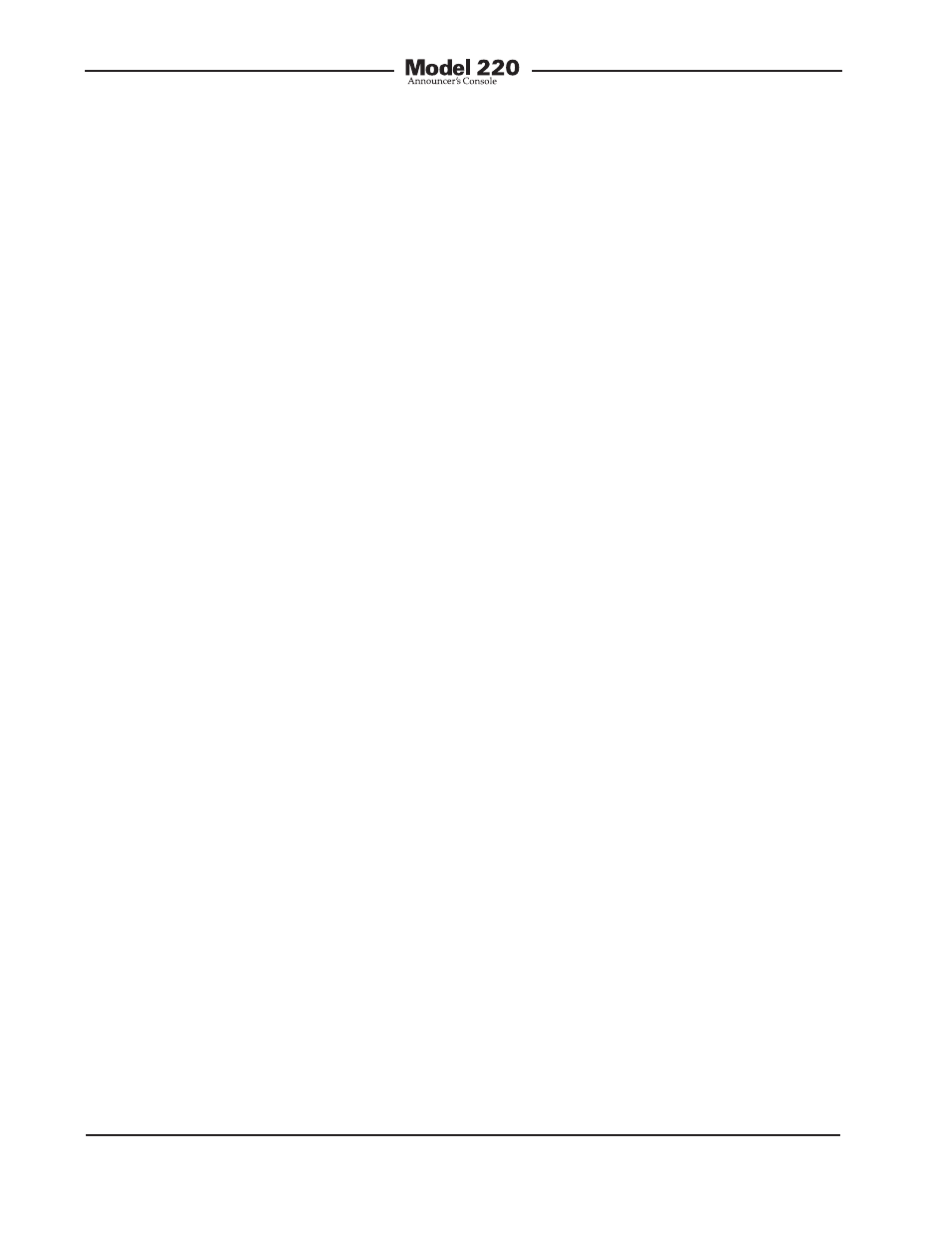Headphone output, Main output – Studio Technologies 220 2008 User Manual
Page 12

Issue 4, October 2008
Model 220 User Guide
Page 12
Studio Technologies, Inc.
suffix “-XQ” to the headset’s part number
(HMD25-XQ) specifies a 3-pin male XLR-
type connector for the dynamic micro-
phone and a ¼-inch 3-conductor plug for
the stereo headphones. This configura-
tion is very useful, allowing the headset
to work directly “out of the box” with the
Model 220.
If the writer may digress for a moment to
recount a story… an audio dealer once
shared a secret with me concerning head-
sets. He loved selling the “lower-end”
(less expensive) models of name-brand
headsets, which he did by the veritable
“boatload.” Why? Because these usually
broke soon after going into service! He
knew that on a regular basis he’d receive
orders for more of them. Had these users,
from the beginning, purchased only
premium-quality headsets, their total cost
of ownership would have been much less.
Enough said…
Headphone Output
The Model 220’s headphone output is
compatible with stereo or mono head-
phones, headsets, or earpieces. Connect-
ing devices with a nominal impedance
of 100 ohms or greater is preferred. This
shouldn’t prove to be an issue as essen-
tially all contemporary devices already
meet this condition.
Devices are connected to the headphone
output by way of a ¼-inch 3-conductor
phone jack located on the Model 220’s
back panel. As is standard for stereo
headphones, the left channel is connected
to the “tip” lead of the ¼-inch headphone
jack. The right channel is connected to
the “ring” lead of the jack. Common
for both channels is connected to the
“sleeve” lead.
Devices with ¼-inch 2-conductor “mono”
plugs can also be used with the Model
220’s headphone output. In this arrange-
ment only the tip lead (left channel) will
be active. The 2-conductor plug will physi-
cally connect (“short”) the ring lead (right
channel) to the sleeve lead (common).
Technically this won’t damage the cir-
cuitry associated with the right-channel
headphone output. (51 ohm protection
resistors are electrically in series with the
headphone output circuits.) However
energy will be wasted if an audio signal
coming out of the right channel goes into
a “dead” short. There is a simple solution
to this issue. No audio source should be
assigned to the right-channel headphone
output. Refer to the Configuration section
of this user guide for details.
Main Output
The main output is intended to be the
“on-air” signal that connects to the input of
an audio console. The output is transform-
er balanced with a nominal signal level of
–2 dBu. The actual level will depend on
the gain setting of the microphone pre-
amplifier, sensitivity of the microphone,
and how loudly the talent speaks into
the microphone. The transformer used
in the main output is intended for profes-
sional broadcast applications. It has a low
source impedance and can drive lengthy
cable runs with no difficulty. It is capable
of driving 600 ohm loads but performs
best with loads of 2 k ohms or greater.
(This should not prove to be an issue as
virtually all contemporary audio equipment
has a relatively high input impedance.)
As the secondary winding of the output
transformer connects directly to the main
output connector, care should be taken
so that DC voltage is never present on the
interconnecting cable.
